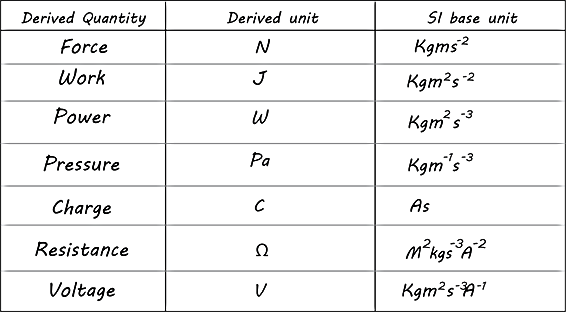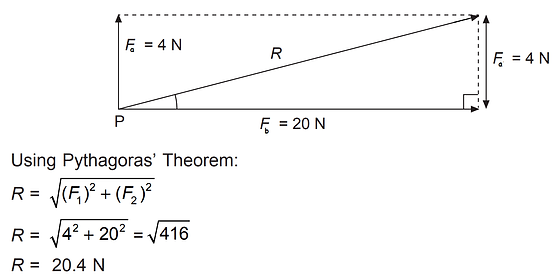Physical quantities
-
All physical quantities consist of a numerical magnitude and a unit.
-
Some SI base quantities and their units:
-
Mass (kg)
-
Length m)
-
Time (s)
-
Current (A)
-
Temperature (K).
Some derived units

Homogeneity
An equation is considered homogeneous if both sides of the equation have the same units.

Prefixes

-
Systematic errors: Errors in a measurement that is caused by a faulty system.
-
Systematic errors always vary by a constant amount.
-
Systematic errors can not be avoided by taking an average value.
-
Examples include zero error.
-
Random errors: Errors in a measurement that is caused by any factor that can vary from one experiment to other.
-
Random errors do not differ by any constant amount but are scattered around the actual reading.
-
Random errors can be avoided by taking an average value.
-
Examples include parallax error
Precision: Measurements with the least range.
Accuracy: It is the reading that is closest to the actual value.

Uncertainty

Fractional uncertainty=
Absolute uncertainty
Measured value
Percentage uncertainty (%)=
Absolute uncertainty
Measured value
x 100
-
Uncertainty is always added.
-
Uncertainty of power function is found by multiplying the uncertainty of quantity by power.
-
There is no uncertainty for constant factors.
Remember!
-
Absolute uncertainty is always expressed in one significant figure.
Example: 1
The velocity of a car is 5.6 ± 2 m/s. The time taken for it to move a distance was 0.8 ± 0.01 s.
Calculate the fractional uncertainty in the value of acceleration.
a=
v
t
To find the fractional uncertainty in the value of acceleration we need to add the fractional uncertainties of velocity and time.
-
To find the fractional uncertainty in the value of acceleration we need to add the fractional uncertainties of velocity and time.
-
To find the percentage uncertainty in the value of acceleration we need to add the percentage uncertainties of velocity and time.
-
fractional uncertainty of velocity = 2/5.6 = 0.357
-
fractional uncertainty of time = 0.01/0.8 = 0.0125
So,
-
fractional uncertainty of acceleration = 0.357 + 0.0125 = 0.37
To find the percentage uncertainty multiply the fractional uncertainty by 100.
Example: 2
The base of a cylinder has a radius of 3 ± 0.2 cm and a height of 10± 1 cm .
Calculate the volume of the cylinder with its absolute uncertainty.
Volume = π r × h
2
-
The value of the highest power contributes the most to the uncertainty in any given equation.
Here,
fractional uncertainty of volume = 2 × fractional uncertainty of radius + fractional uncertainty of height.
fractional uncertainty of radius = 0.2 / 3
fractional uncertainty of height = 1 / 10
fractional uncertainty of volume = (0.067 × 2)+ 0.1 = 0.234
Volume = 282.74
Absolute uncertainty of volume = fractional uncertainty × the value of the volume.
= 0.234 × 282.74
= 66.16
Finally ,
Volume = 280 ± 70 cm
3
Scalar Quantity: Quantities that have a magnitude only. Example : distance, speed, time, mass, energy and temperature.
Vector Quantity: Quantities that have both a magnitude and a direction . Example :displacement, force, weight, velocity, acceleration, momentum, electric field strength and gravitational field strength
Vectors

-
Select an appropriate scale E.g. 1 cm to 2 N.
-
Step 2: Draw a parallelogram of vectors to scale.
-
Step 3: Measure the diagonal to find R(AB)
Pythagorean theorem can be used if is a right angled triangle.

Steps to find the period of oscillation:
Step 1: Take the total time for multiple oscillations (E.g 20).
Step 2: Repeat Step 1.
Step 3: Take the average of the two timings.
Step 4: Divide the average in Step 3 by the number of oscillations ( here 20) to obtain the period.
Resolving forces
A force can be resolved into two perpendicular components.
For the horizontal component, it is R Sinθ.
For the vertical component, it is R Cosθ.
